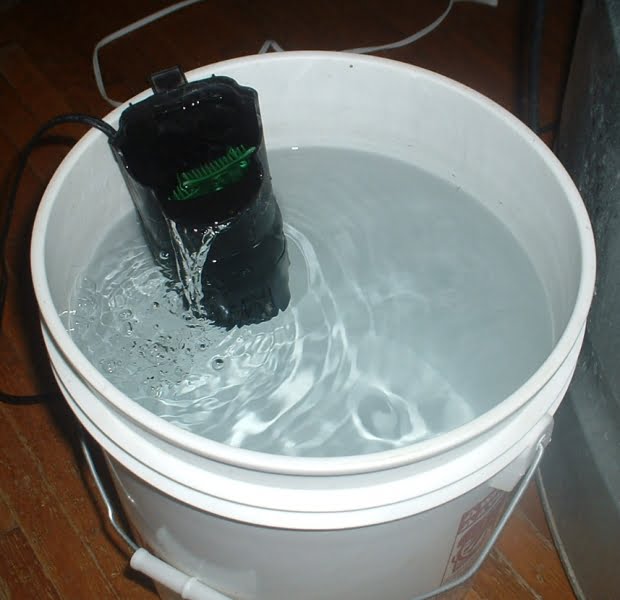Water Changes reduce nitrates, increase oxygen and mineral value
STEP 8
Water changes must be performed frequently to keep oxygen levels up and nitrates down in our goldfish house. We’ve learned that beneficial bacteria are responsible for the nitrogen cycle. Without these friendly bugs, goldfish would be poisoned by their own waste. Keeping fish safe in captivity would be a challenge if not impossible without this miracle of nature
Without the nitrogen cycle, life would not exist as we know it
Nitrates are the third and final conversion in the cycle; tolerated by goldfish at low levels. This toxin can only be removed by means of a partial water change. If the environment in your goldfish house cannot support beneficial bacteria, then it will support harmful bacteria. If bad bugs flourish in your tank or pond, your goldfish won’t. It’s that simple
Cleaning goldfish aquarium
Exchange less water more often to keep nitrates at consistent levels
Water changes
Another reason to perform frequent water changes; goldfish emit a growth hormone dangerous at high levels. Goldfish in overstocked tanks are at risk of being poisoned by these hormones which may stunt growth. These same hormones cause cancer, heart disease and even death
Add plants to your set up. Plants feed on nitrates keeping levels at bay. There is one plant that forms naturally in the right conditions with no maintenance, and that’s algae
Fish are at risk of ammonia and or nitrite poisoning if the cycle has not completed
If your tank has not cycled, perform daily water changes between 20% to 30% (depending on stocking levels) for the next 8 to 10 weeks. Use water treatment (enough for entire tank size) that eliminates ammonia, nitrite, chlorine and chloramines
Refer to Step 5: Water Treatment: to determine recommended dosages required for making conversions
Never perform a 100% water change. Along with the bad bacteria and toxins, you’ll be throwing out water that provides nourishment for good bacteria also
If your tank has cycled perform bi weekly water changes of 10% to 20% depending on stocking levels. Eliminate chlorine or convert chloramines using water treatment if present
Water changes aquarium
An overstocked tank requires increased amounts of partial water changes
Test fish water before every water change; adjust water changes accordingly. The comfort zone is 20 to 40 ppm with the lower end of the scale being preferred; a buffering zone in case of a spike
Here are some tips to keep water changes easier
- Make sure water buckets have strong and secure handles
- Keep the buckets light so they’re easy to carry; don’t over fill
- Take your time. Don’t rush through bailing water; slow and steady
- Keep a towel beneath buckets while removing or adding water
- Keep filters and pumps in fish water at all times
- Never use detergents or cleaning agents on goldfish house or equipment
- Work water over to remove supersaturated gases from tap water
- Never add water treatment or any other substances directly to goldfish tank
- Keep a watchful eye on running water from a faucet unattended
- How to perform proper water changes
Match the amount or percentage of old tank water you are going to remove with your freshwater source
Prepare fresh water by adding treatments and eliminating super saturated gases
Vacuum waste from gravel, beneath pumps and decorations
Replace old tank water with freshwater gradually in order to prevent nitrate shock. Take your time by removing and replacing 5% every half hour in a cycled fish house. This added effort will help your fish to acclimate to the change of nitrates and temperature of the fresh water, but most importantly, it keeps the water table high, reducing the risk of nitrate shock
Boost pH
Changing goldfish water
The bucket of freshwater is prepared just after a water change. The HOB filter turns the water, supersaturated gases are eliminated and the water remains oxygenated, however, it also helps to eliminate chlorine from the water

Partial water changes accomplish much more than assuring the continued production of friendly bio bugs. Partial water changes allow the goldfish to remain in the safety of their tank or pond. There may be some stress involved with the event, however, much less than being caught and temporarily relocated
Oop Boost with every water change to improve oxygen levels and to eliminate chlorine (does not remove chloramines)
10 Steps to Goldfish Koi Keeping
copyright 2007
Author: Brenda Rand